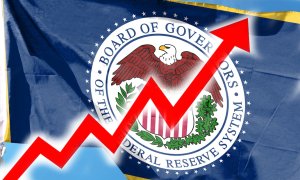Non-mainstream economists are disputing neoclassical ideas about capital.
Thomas Piketty’s Capital in the Twenty-First Century, despite its huge achievement in focusing attention on the all-important issues of distribution of income and wealth, also stirred up a round of intense debate about what exactly we mean when we talk about capital.
Economists have long argued about this concept, notably in what are known as the ” Cambridge Capital Controversies” during the 1950s and 1960s. Now the debate is simmering again. Economists outside the mainstream of neoclassical theory have taken particular issue with Piketty’s misuse of the concept of capital and the aggregate production function, which relates to the total output of a nation’s economy and with his misconception of the Cambridge capital controversies (see the Fall 2014 mini-symposium of the International Journal of Political Economy on this debate).
You can think of capital as a bundle of produced physical commodity inputs — heterogeneous commodities like machinery and equipment, raw materials, means of transport, and so on — whose values depend on the rate of profit. One of the lessons of those Cambridge capital controversies was that those physical capital inputs can’t be treated in the same way as labor and land to explain income distribution, unless you willfully engage in circular reasoning. Tied to this concept of an aggregate capital input there is the equally dubious concept of a marginal product of capital (MPK), defined as the additional output arising from an extra bit of capital. To refer to MPK as if it was a definable and measurable concept is to perpetuate a lie buried deep in late nineteenth-century marginalist writings whose driving force was the ideological opposition to classical and Marxian views of capital and income distribution.The use of such concepts as the MPK was long proven to be problematic in the analysis of capital, and especially its use in both explaining income distribution and as a tool of analysis in growth theory. Yet, mainstream economists remain completely oblivious or, perhaps, even more sadly, they purposely ignore these conceptual issues and ridicule those who reject their use.
Ideological biases have sprung up again. In an article in the highly-respected American Economic Review, “Mathiness in the Theory of Economic Growth,” Paul M. Romer complains about the work of some of his neoclassical colleagues involved in theories of growth. In so doing, he argues that ‘economists usually stick to science’ but that some of them ‘let academic politics masquerade as science.’ Starting with what he obviously believes to be a well-known example, Romer takes a swipe at non-mainstream economists by writing that ‘Joan Robinson (1956) was engaged in academic politics when she waged her campaign against capital and the aggregate production function,’ the latter term referring to a framework for determining how much of an economy’s growth is related to changes in capital or changes in technology. At the same time, Romer claims that ‘Robert Solow (1956) was engaged in science when he developed his mathematical theory of growth.’
There is quite a bit of irony in these claims by Romer. As pointed out by Matias Vernengo and by Robert Vienneau in their blogs, Romer’s example is certainly a wrong one. Nobel laureate Paul Samuelson himself recognized long ago that Joan Robinson was quite right to question the validity of the neoclassical aggregate production function and all the nice properties that go with it. Robinson had a scientific point, which was also confirmed by the work of Piero Sraffa in 1960. Samuelson recognized all of this in an article that was published in 1966 in another well ranked academic journal, the Quarterly Journal of Economics. Really, Romer and all those who make fun of Joan Robinson or of the Cambridge capital controversies have no excuse for ignoring the lessons that could be drawn from these. An instance of what Samuelson was forced to recognize is that in a world with several sectors — which is the world in which we live — a more abundant quantity of labor services will not necessarily drive down the cost of labor relative to that of capital. Indeed, even if one were to accept Solow’s (1956) highly unrealistic model with its assumption that saving drives investment (meaning that whenever agents wish to save firms will decide to invest more, thus putting aside the important paradox of thrift that was so central to both Keynes’s and Robinson’s macroeconomic vision), there remains an outstanding issue that was put to the fore by the Cambridge capital controversies. The important logical conclusions resulting from those capital controversies jeopardize the very mechanism imagined by Solow, tied to the evolution of the capital-to-output ratio that would supposedly bring the Harrodian warranted rate of growth towards the full-employment growth rate.
However, there is an even more ironical point. Romer writes that Solow’s 1956 ‘mathematical theory of growth’ mapped the word “capital” onto a variable in his mathematical equations, and onto … data from national income accounts.’ As we say in French, ’ il ne saurait si bien dire!’ [he couldn’t have said it better!] In 1957, Solow did apply his theoretical model in a subsequent article, Technical Change and the Aggregate Production Function, where he wished to estimate the relative contribution of capital accumulation and technical progress, and thus isolate ‘shifts’ of the aggregate production function from ‘movement’ along it. At the time, Solow marveled at the fact that ‘the fit is remarkably tight,’ with clear evidence of diminishing returns, as would be the case in the standard Cobb-Douglas production function, which is often used to discuss the relationship between two inputs, like capital and labor. Romer wishes to praise Solow when he says that Solow mapped his data from national income accounts. This is indeed quite true, as Anwar Shaikh demonstrated in his 1974 HUMBUG paper, where he shows that Solow did nothing more than simply to run a regression on national income accounts, thus proceeding to a tautology (with an R2 = 0.999!).
In their 2013 book, Jesus Felipe and John McCombie examined and explained in great detail why econometric estimates based on aggregate production functions, and thus based on deflated monetary values, as is the case with values taken from the national accounts, fail to measure what they purport to quantify: they are artefacts – purely imaginary results. For instance, when claiming to measure the output elasticity of labor, neoclassical authors, following on the footsteps of Solow’s work in 1957, are really measuring the overall income share of labor! This affects all neoclassical applied aggregate work that relies in some way or another on well-behaved production functions and profit-maximizing conditions, including labor demand functions, investment theory and measures of total factor productivity growth.
In light of this, one wonders who was and still is really doing scientific work!






